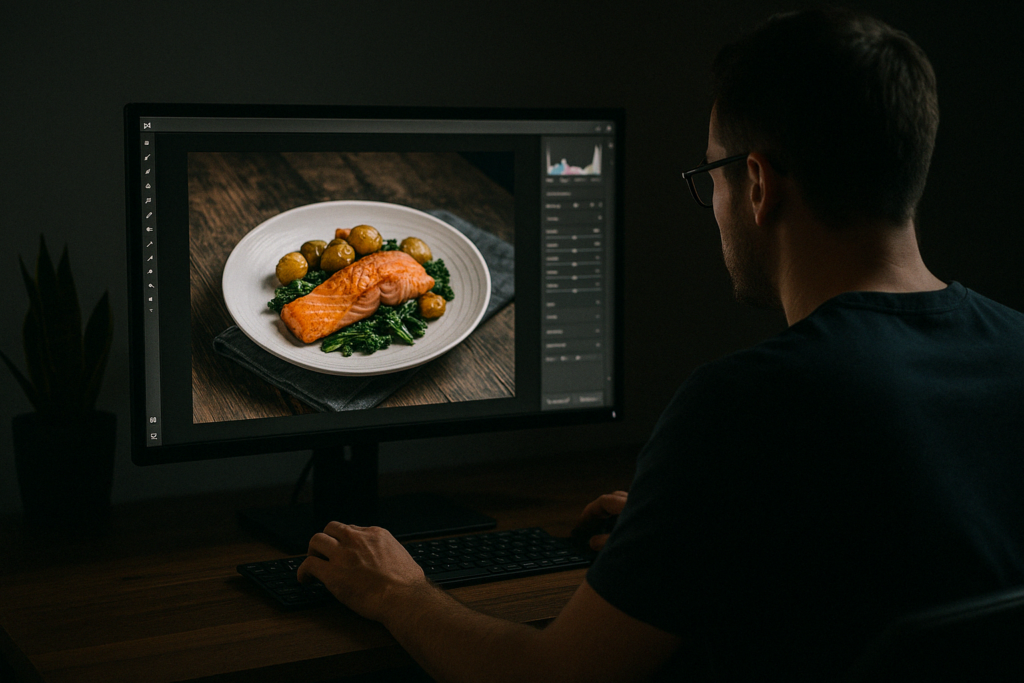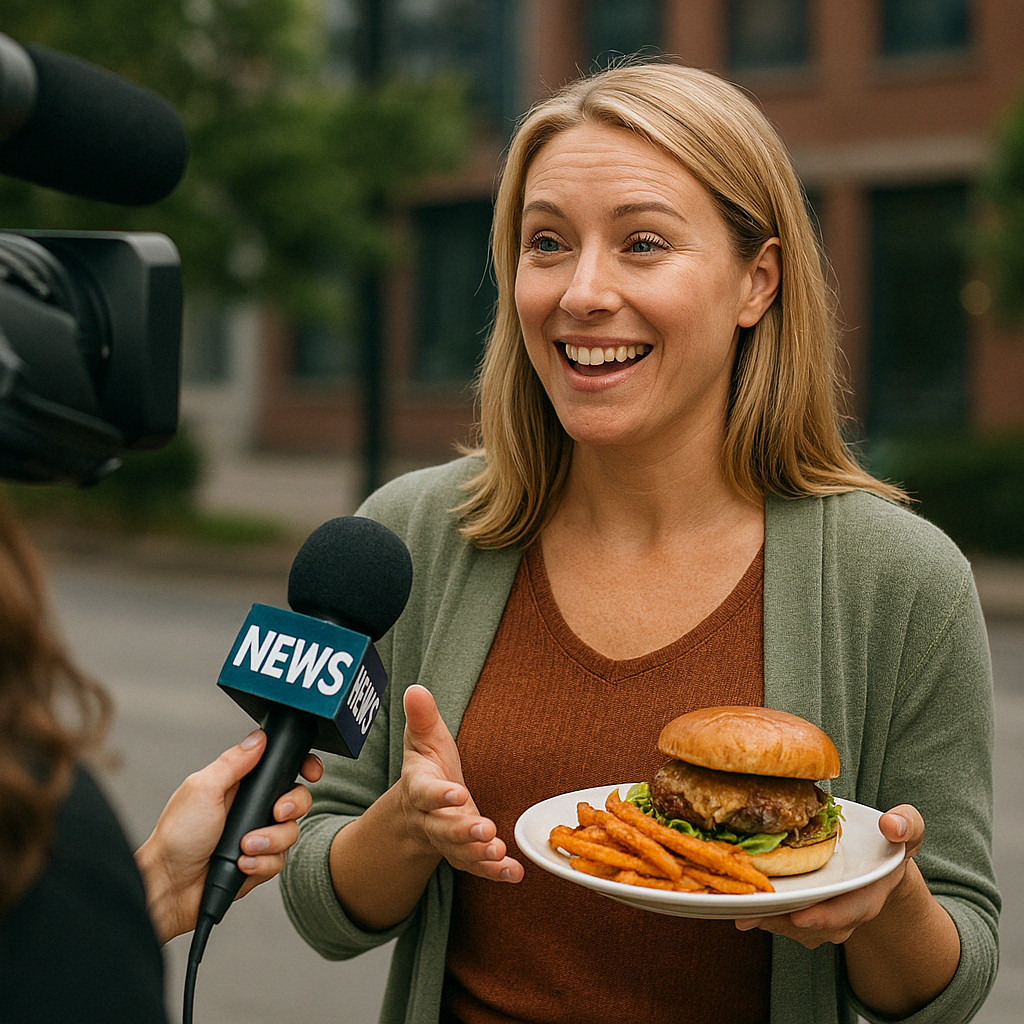Imagine this: you’ve just whipped up the most delicious homemade pasta dish. The aroma fills your kitchen, and as you take that first bite, you think, I have to share this with the world! That, right there, is the spark that ignites many food bloggers’ journeys.
Food and storytelling are a match made in heaven. Whether it’s a treasured family recipe, a creative twist on a classic dish, or a restaurant review that transports readers to new culinary experiences, a food blog offers more than just recipes. It serves as a gateway to connection, creativity, and even income.
What makes a food blog truly successful? It’s not just about cooking skills. It’s about creating a space where food lovers feel at home. A place where blogging and food blend seamlessly, forming a welcoming community. People come together to share their love for flavour, culture, and creativity.
And here’s the best part. Your food blog doesn’t have to stay a hobby. With the right strategies, it can grow into a thriving platform. You can build an engaged audience, increase blog traffic, and even earn money. Whether you want to work with brands or publish a recipe book, opportunities abound. You could even launch an online cooking course and turn passion into profit.
If you’re ready to take your food blog from idea to reality, start now. The first key step is finding your niche and standing out. Let’s dive in and explore how to make your blog a success.
Finding Your Niche: Stand Out in the Food Blogging World
With thousands of food blogs already out there, how do you make yours stand out? The answer lies in finding a niche, a specific angle that makes your blog unique and memorable. Instead of being a general food blogger, narrowing your focus helps attract the right audience. It also strengthens your authority and sets you apart from the competition.

Why Finding a Niche Matters
- Less Competition – A well-defined niche helps you rank higher on search engines.
- Stronger Audience Connection – Readers are more likely to follow and engage with niche-specific content.
- Easier Monetisation – The food blogging industry is among the most profitable, with a median monthly income of $9,169.
Popular Niche Ideas for Food Bloggers
Recipe Development – Focus on a specific style of cooking.
- Vegan, keto, gluten-free, or high-protein recipes.
- Quick meals for busy professionals.
- Traditional family recipes are passed down through generations.
Food Travel Blogging – Explore global cuisines.
- Write about street food experiences around the world.
- Share restaurant reviews from your travels.
- Highlight regional food traditions and hidden culinary gems.
Restaurant and Café Reviews – A niche for food lovers who enjoy eating out.
- Rate and review local restaurants with in-depth analysis.
- Provide insider tips on the best dishes to try.
- Focus on a specific type of dining, like fine dining, street food, or sustainable eateries.
Budget Cooking and Meal Planning – Help people save money while eating well.
- Affordable grocery shopping tips.
- One-pot meals or batch cooking strategies.
- Budget-friendly meal prep for families.
How to Make Your Niche Unique
- Blend storytelling with your expertise – Share personal experiences, cultural insights, or family traditions.
- Find a fresh angle – If your niche is crowded, add a unique twist (e.g., “Easy Vegan Meals for Athletes” instead of just “Vegan Recipes”).
- Learn from the best – Nagi Maehashi, creator of RecipeTin Eats, became one of Australia’s top food bloggers, earning over half a million dollars annually in 2017 with around 4 million monthly page views.
- Experiment and refine – It’s okay to adjust your niche as you grow and see what resonates with your audience.
Setting Up Your Food Blog Like a Pro
Once you’ve chosen your niche, it’s time to bring your food blog to life. A well-structured blog not only looks appealing but also improves user experience, keeps readers engaged, and helps with SEO. Here’s how to set up your blog like a pro.
Choosing the Right Blogging Platform
The platform you choose determines how easily you can customise, manage, and grow your blog. Here’s a quick comparison of the most popular options:
- WordPress.org – Best for full control, flexibility, and SEO. Requires separate hosting.
- Wix – User-friendly with drag-and-drop features but limited in SEO capabilities.
- Squarespace – Visually stunning templates, but less customisable than WordPress.
For serious bloggers, WordPress.org is the top choice due to its powerful SEO tools and scalability.
Picking the Perfect Blog Name and Domain
Your blog’s name is its identity, so make it memorable, unique, and SEO-friendly. Here are some tips:
- Keep it short and easy to spell.
- Include keywords related to food or your niche if possible.
- Avoid hyphens and numbers—they can be confusing.
Once you have the perfect name, register a .com domain for a professional look.
Designing an Engaging Layout
Your blog’s design should be visually appealing and easy to navigate. Focus on:
- A clean, mobile-friendly layout – Over 60% of website traffic now comes from mobile users.
- A cohesive colour scheme – Choose colours that complement food imagery.
- Clear navigation menus – Make it easy for readers to find recipes, reviews, and blog posts.
Essential Plugins and Tools for Food Bloggers
To enhance your blog’s functionality, install essential plugins. Some must-haves include:
- Recipe Plugins – WP Recipe Maker, Tasty Recipes.
- SEO Tools – Yoast SEO, Rank Math.
- Social Sharing – Grow by Mediavine, Social Warfare.
With these elements in place, your blog will be ready for content creation. But before diving into recipes, let’s explore how storytelling can take your food blog to the next level.
The Art of Storytelling in Food Blogging
Great food blogs aren’t just about recipes. They tell stories that create a sense of connection. Whether it’s baking with a grandparent or discovering a dish while travelling, food holds emotions. Storytelling turns a simple recipe into a meaningful and memorable experience.
How Successful Food Bloggers Use Storytelling
Many of the world’s top food bloggers build their brands through personal stories. Take Nagi Maehashi from RecipeTin Eats as an example. Her success comes not just from sharing recipes but from adding personal anecdotes.

She includes behind-the-scenes cooking experiences and family influences to engage her audience.
Stories create an emotional bond with readers, making them more likely to trust your expertise, return to your blog, and engage with your content.
Techniques for Crafting Engaging Stories in Blog Posts
- Start with a hook – Open with a vivid memory, a personal challenge, or an interesting fact.
- Describe with the senses – Instead of saying, “The soup was delicious,” try, “The rich, velvety broth, infused with roasted garlic and slow-simmered tomatoes, wrapped me in warmth on a cold winter night.”
- Tie it back to the recipe – The story should enhance, not overshadow, the main content.
Balancing Storytelling with Informative Content
While storytelling makes content engaging, remember that readers also want useful information. Keep a balance by:
- Use short storytelling sections before getting to the recipe.
- Adding subheadings and bullet points for easy readability.
- Including a “Jump to Recipe” button for those who prefer to skip straight to the instructions.
Mastering storytelling makes a food blog not just informative but memorable. Now, let’s take that impact even further by exploring how to create jaw-dropping visuals for your blog.
Creating Jaw-Dropping Visuals for Your Food Blog
A food blog without stunning visuals is like a dish without seasoning. Beautiful imagery draws readers in, makes recipes more enticing, and increases engagement on social media. But great visuals go beyond just photography.
Let’s explore how to elevate your food blog with eye-catching content.
Food Photography Basics
Good food photography can make even the simplest dish look irresistible. Here’s how to get it right:
- Lighting is everything – Natural light is your best friend. Shoot near a window and avoid harsh artificial lighting.
- Composition matters – Experiment with overhead shots, close-ups, and the rule of thirds to create visually dynamic images.
- Keep it real – Messy, imperfect food shots often feel more authentic and inviting than overly staged photos.
Beyond Photography: Video and Interactive Content
Food blogging is evolving, and video content is now a game-changer. Short-form videos on Instagram Reels, TikTok, and YouTube Shorts attract massive engagement. Even adding simple GIFs or step-by-step animations can bring your recipes to life.
Interactive content also enhances the reader experience. Consider:
- Polls and quizzes – Help readers discover their ideal recipe or cooking style.
- Behind-the-scenes clips – Show your process, kitchen setup, or grocery hauls.
- Live Q&A sessions – Engage with your audience in real time and build a stronger community.
Mastering Social Media: The Key to Growing Your Food Blog
Creating amazing content is only half the battle. Getting it seen is just as important. Effective promotion helps attract readers and grow your audience. Social media is a powerful tool for driving blog traffic, building an engaged audience, and even monetising your platform.
However, different platforms require different strategies. Here’s how to maximise your reach.
Choosing the Right Social Platforms
Not all platforms work the same way for food bloggers. Focus on the ones that best showcase your content:
- Instagram – Perfect for high-quality food photography, reels, and behind-the-scenes stories.
- Pinterest – A goldmine for driving traffic to your blog. Vertical pins with engaging titles get shared widely.
- TikTok – Quick food hacks, step-by-step recipes, and viral trends work well here.
- Facebook Groups – Niche food communities offer great opportunities for engagement.
Strategies for Engagement and Growth
- Use trending hashtags to increase visibility.
- Engage with your audience by responding to comments and DMs.
- Collaborate with other food bloggers through shoutouts, challenges, or recipe swaps.
- Run giveaways to encourage shares and follows.
Repurposing Content Across Platforms
One blog post can be transformed into multiple social media pieces:
- A recipe blog post → Instagram carousel with step-by-step images.
- A detailed restaurant review → A TikTok video highlighting key dishes.
- A long-form article on food trends → A Pinterest infographic.
Monetising Your Food Blog: More Than Just Ads
Turning a food blog into a source of income requires diverse monetisation strategies beyond basic ads. While display ads can bring in some revenue, successful food bloggers use multiple income streams to maximise earnings.
Monetisation Methods Compared
| Monetisation Method | How It Works | Best For |
| Affiliate Marketing | Promote kitchen tools, cookware, or ingredients and earn a commission on sales. | Bloggers who recommend products they use. |
| Sponsored Content | Partner with brands to create paid blog posts, videos, or social media promotions. | Bloggers with strong audience engagement. |
| Selling Digital Products | Offer e-books, meal plans, or exclusive recipe collections. | Those with unique expertise or niche recipes. |
| Online Cooking Classes | Conduct live or pre-recorded cooking lessons for a fee. | Bloggers who enjoy teaching and interacting with their audience. |
| Membership & Exclusive Content | Use platforms like Patreon to offer premium content, early access to recipes, or behind-the-scenes content. | Bloggers with a loyal community willing to pay for extra content. |
Beyond Traditional Monetization
Most bloggers rely on ads and affiliate marketing, but successful food bloggers explore more personal and scalable options. Offering an online course, creating premium content, or even launching a recipe subscription service can generate a steady income.
SEO & Traffic Hacks for Food Bloggers
Even the best food blogs won’t succeed if they don’t appear in search results. SEO (Search Engine Optimisation) is crucial for driving organic traffic to your site, and helping your recipes and reviews reach the right audience. Here’s how to optimise your content for maximum visibility.
Optimizing Recipes for Google’s Featured Snippets
Google often highlights well-structured recipes at the top of search results. To increase your chances of being featured:
- Use structured data markup – Recipe schema helps search engines understand and display your content better.
- Write clear, concise recipe descriptions – Google pulls snippets from well-organised content.
- Include step-by-step instructions in bullet points – This improves readability and ranking potential.

Leveraging Long-Tail Keywords
Instead of targeting broad terms like “pasta recipe,” aim for specific, intent-driven keywords:
- “Quick 10-minute vegan pasta recipe”
- “Best gluten-free chocolate cake with almond flour”
- “High-protein breakfast smoothie for weight loss”
These long-tail keywords face less competition and attract the right audience.
Guest Blogging & Backlinks for Credibility
Building high-quality backlinks (links from reputable websites) boosts your authority in Google’s eyes. Some effective ways to do this:
- Write guest posts for well-known food blogs or news sites.
- Collaborate with other food bloggers for link exchanges.
- Get featured in recipe roundups or food-related articles.
Building a Community: How to Keep Readers Coming Back
A successful food blog isn’t just about sharing recipes. It’s about creating a space where readers feel connected. The best food bloggers don’t just attract visitors; they build an engaged community that keeps returning.
Encouraging Reader Interaction
- Make your blog comment-friendly – End each post with a question to spark discussions.
- Respond to comments and emails – A personal reply makes readers feel valued.
- Feature user-generated content – Share reader-made versions of your recipes on social media.
Hosting Giveaways, Challenges, and Q&As
- Run cooking challenges where readers recreate your recipes.
- Host a giveaway featuring your favourite kitchen tools or cookbooks.
- Organise live Q&A sessions on Instagram or Facebook to answer food-related questions.
Leveraging Email Newsletters
Social media algorithms can change, but email marketing ensures direct access to your audience. A newsletter helps you:
- Share exclusive recipes, meal plans, or behind-the-scenes content.
- Keep readers updated about new blog posts or upcoming events.
- Strengthen relationships by offering valuable content beyond the blog.
From Passion to Profit: The Road Ahead for Food Bloggers

Starting a food blog is more than just sharing recipes. It’s about building a brand, a community, and even a business. Whether you’re documenting family recipes, reviewing hidden-gem restaurants, or sharing expert cooking tips, your blog has the potential to grow into something incredible.
The most successful food bloggers balance passion with strategy. They tell compelling stories, create stunning visuals, optimise search engines, and engage with their audience on multiple platforms. And most importantly, they stay consistent and adaptable, learning and evolving as they go.
If you’re serious about turning your love for food into a thriving blog, now is the time to start. Experiment, engage, and refine your approach. Your audience is waiting!
Ready to take your food blog to the next level? Visit SpoonFed Atlanta and start your journey today!
